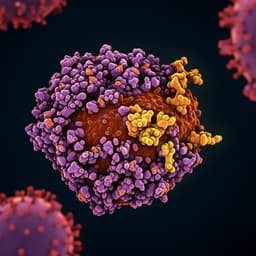
Earth Sciences
Cosmic dust fertilization of glacial prebiotic chemistry on early Earth
C. R. Walton, J. K. Rigley, et al.
This groundbreaking research reveals how cosmic dust may have played a pivotal role in fertilizing prebiotic reactions on early Earth, challenging previous assumptions about the availability of bioessential elements. Conducted by a team led by Craig R. Walton and including Jessica K. Rigley, Alexander Lipp, Robert Law, Martin D. Suttle, Maria Schönbächler, Mark Wyatt, and Oliver Shorttle, this study uncovers remarkable insights into our planet’s early chemistry.
Playback language: English
Related Publications
Explore these studies to deepen your understanding of the subject.







